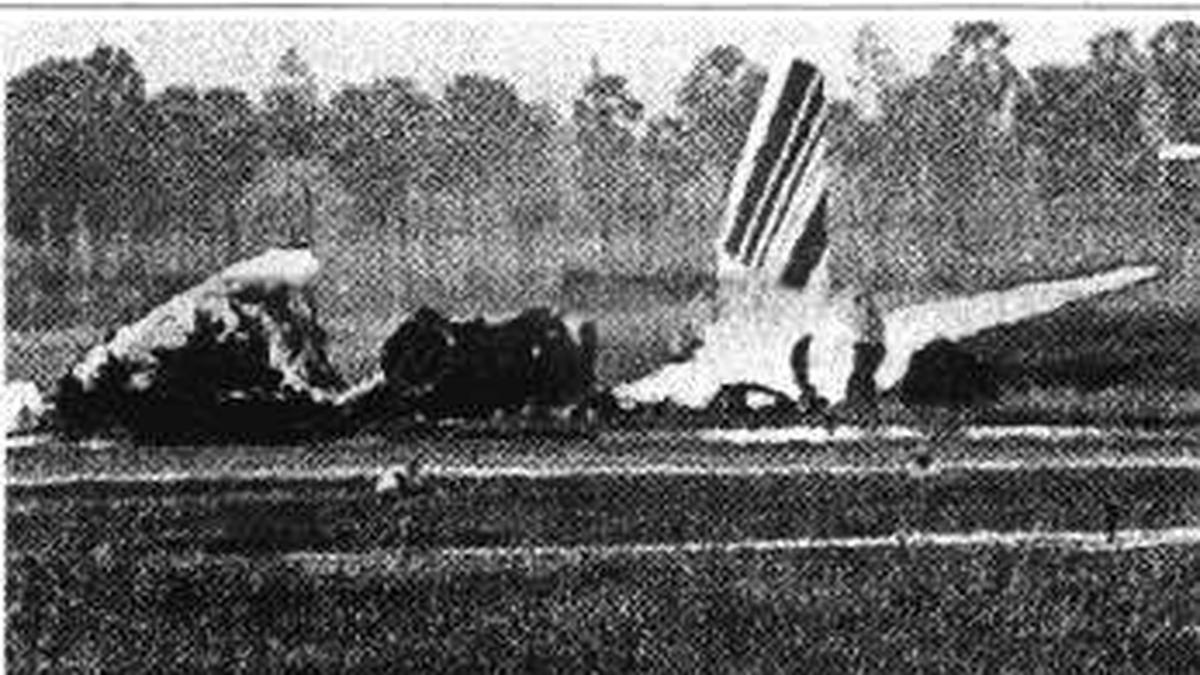At around 11:25 p.m. on March 5, 1999, an Air France Boeing 747 freighter aircraft (AF-6745), carrying five crew members and 66 tonnes of assorted cargo, attempted to land at Chennai Airport in Meenambakkam. It missed the first landing attempt. Captain Jean, who was piloting the aircraft from Paris with stopovers at Karachi and Bangalore, informed Chennai Air Traffic Control (ATC) that the plane had developed a “technical snag.”
A short while later, the aircraft approached again from the Pallavaram end of Runway 7 (the main runway). This time, its nose-wheel landing gear failed to deploy, and the jumbo jet landed with a thud, “screeching to a halt after covering half the runway on its belly.” Smoke billowed from the nose-wheel area.
The Airport Fire Service swung into action, deploying airfield fire rescue vehicles, five crash fire tenders, and one water tender. Four of the five crew members were rescued using a step ladder through the tail-end of the aircraft. “The last occupant, an Indian national, was rescued with the help of a rope ladder. He injured his leg when he jumped off in panic. The injured crew member, Mr. Nandhya Hillol, was rushed to a city hospital,” reported The Hindu on March 7.
Airport authorities declared a “full emergency,” alerting all emergency services, and Chennai Airport was shut down at 11:50 p.m.
According to the Tamil Nadu Fire and Rescue Services Department, “The control room in Chennai received information about the fire at 23:35 hours.” The incident is listed on the department’s website among the major fire accidents it has handled.
Two fire units from nearby Guindy and Tambaram were dispatched. The situation quickly became alarming. Two foam tenders and two water tenders joined the firefighting efforts. Subsequently, eight more water lorries reached the site. “Airport Fire Station and Tamil Nadu Fire and Rescue Services personnel conducted intense firefighting. The Director of Fire Services, along with the Deputy Director, two Divisional Fire Officers, and about 50 firemen, as well as the Assistant Director (Fire) and 40 others from the Airport Fire Service, battled the blaze for over three hours, finally extinguishing it by 2:30 a.m. on March 6,” the department said. By then, only charred metal parts, the tail, and nose sections remained on the damaged runway.
According to The Hindu, the fire broke out about 40 minutes after the aircraft crash-landed. It spread rapidly from the wings to the fuselage and tail. A series of explosions followed as the fuel ignited.
A major catastrophe was averted, as the exploding debris did not damage nearby aircraft parked in adjacent bays.
Commenting on the inability to save the aircraft, then Airport Director Sudhir Kumar said the “exact source of the fire was not visible,” which made it difficult for the fire tenders to effectively target the flames. Since the aircraft had landed in the middle of the main runway, blocking normal operations, a NOTAM (Notice to Airmen) was issued around 11:50 p.m. announcing the closure of Chennai Airport. A Lufthansa flight arriving from Frankfurt was diverted to Mumbai. Other passengers booked on Malaysian Airlines, Indian Airlines, and Lufthansa flights were stranded and provided hotel accommodation.
During the chaos, a delay in restoring runway lights caused the late departure of a Delhi-bound Indian Airlines flight. It also led to anxious moments for a Jet Airways flight attempting to land from Mumbai, which was eventually diverted to Bangalore with only 20 minutes of aviation turbine fuel left.
Less than six hours after the crash-landing, officials from the Directorate of Airworthiness (a wing of the Directorate General of Civil Aviation, DGCA) located the aircraft’s black box on the runway, though it was slightly damaged by the fire.
DGCA Director General H.S. Khola, who rushed to Chennai, stated that the landing gear — including the nose-wheel that failed to deploy — was found intact. Based on preliminary investigations, he said the onboard flight engineer had made a “wrong assessment” of the nose-wheel’s condition. The pilot, acting on the engineer’s confirmation that there was no fault, proceeded with the second landing. “Only after touchdown did the pilot realise the engineer’s assessment was incorrect,” Mr. Khola said.
Director of Air Safety V.K. Chandna was appointed the “Inspector of Accident” to investigate the incident.
Air France dispatched a senior official based in India along with a technical team to assist with the investigation and assess the cause of the fire.
Flight operations resumed at 2 p.m. on March 6 on a shortened 7,000-foot stretch of runway, when an Alliance Air flight took off for Bangalore and Mangalore. Mr. Khola praised the Chennai ATC for “providing timely navigational guidance” and lauded the quick restoration efforts by the Airports Authority of India’s international division.
What was in the cargo?
According to the Tamil Nadu Fire and Rescue Services Department, the aircraft was carrying consignments of clothes and cut flowers. However, the Geneva-based Bureau of Aircraft Accidents Archives states on its website that the cargo also included 20 tonnes of cigarettes, chemicals, and three cars.
Published – June 14, 2025 06:04 am IST





